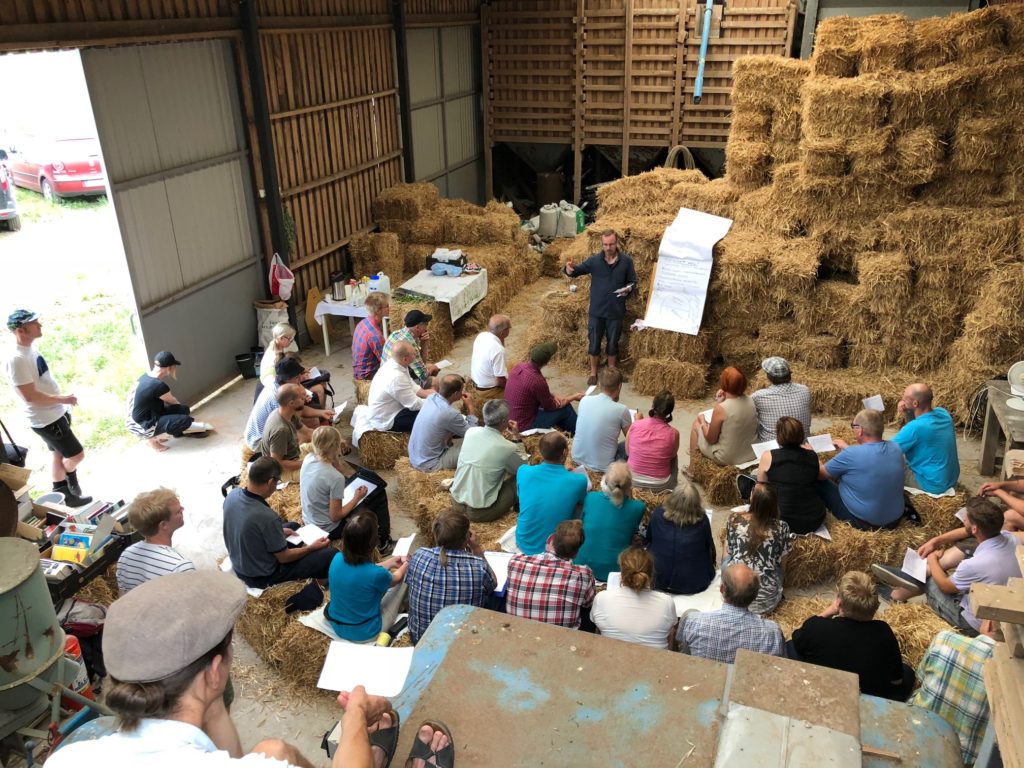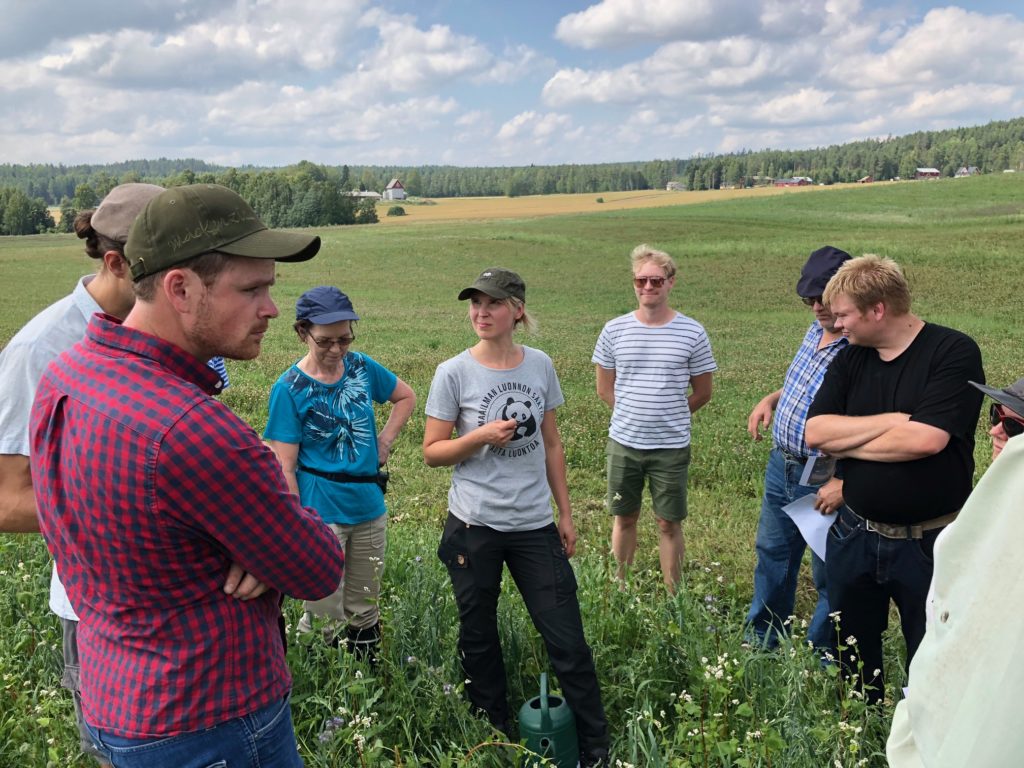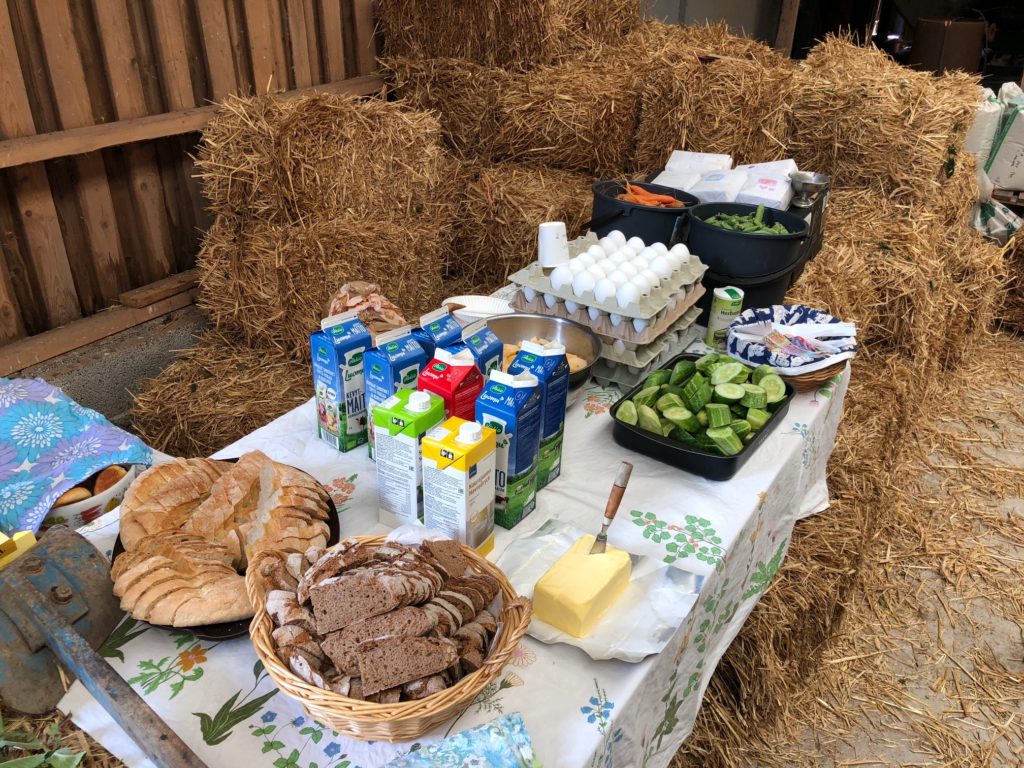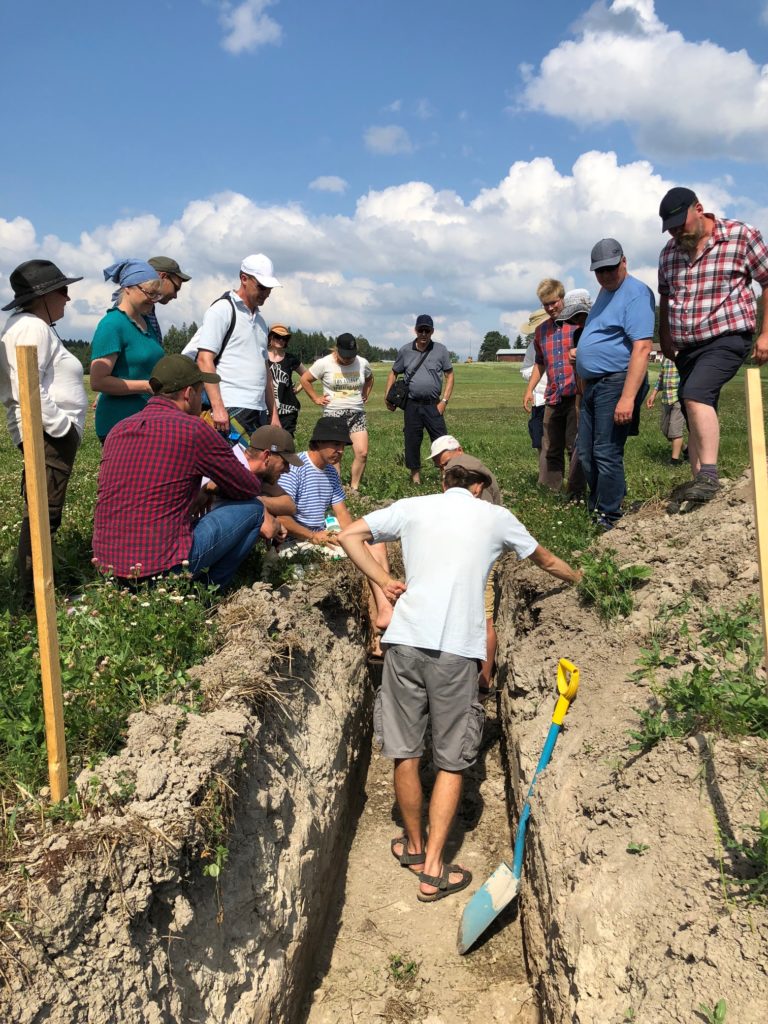On July 28th, 2018 Tuomas and Iiris Mattila opened up their farm to the public for a day of Holistic Management training, field activities, and networking. The day was arranged as a joint event by Kilpiä Farm, Holistic Management International, World Wildlife Fund, and Tyynelä Farm.
A key objective for the day was to introduce people to the Holistic Management® framework, which Tuomas and Iiris have found essential at Kilpiä Farm for managing complex farm ecosystems. Another objective was to help people network and connect with like-minded forward-thinking people in the agricultural sector of Finland. Forty-four people attended representing over 1000 hectares directly and 10,000 hectares through their networks.
The day began with a brief introduction to Holistic Management by Tuomas and an opportunity for everyone to get acquainted. The idea of shifting from “constant emergency mode” to managing what we want in the long term got the crowd nodding their heads. We scheduled time for people to discuss and share their understanding and it was usually difficult to get people to stop discussing so we could move on to the next point. It’s one of the best sounds in the world, farmers solving problems together in a positive mindset.
To give the participants a more hands-on experience in applying holistic decision making Tuomas presented them with the problem of prioritizing soil health investments on Kilpiä farm. As it’s well known, there is much to improve on farmland, but few can afford to do it all in one go…and usually it’s not smart to try to. But learning how to choose between big projects like installing new field drains and smaller ones like improving the cover crop plan or retrofitting better tyres is important. Tuomas lead the group through the testing questions in small groups and allowed people to sift through the causes and effects and marginal productivities. In the end, we did not get a final portfolio for investment but had a lot of valuable discussions. Which is one of the key values of the decision testing matrix: opening new questions.
After a delicious lunch of Kilpiä Farm's own rye porridge, local cucumbers, carrots, freshly baked rye bread from the neighborhood mill, and hard-boiled eggs, the group headed to the fields. There they learned how to monitor ecosystems through the four windows into ecosystem functioning: energy flow, biodiversity, water cycles, and nutrient cycles. The group was split into three groups going through each session, allowing for more interaction between participants and for more in-depth learning opportunities for everyone. Because we had a couple of surprise participants join us from Austria and the United States, one of these groups was the English speaking group. Many Finns joined this group to network with the foreigners who were somewhat new to the Finnish landscape.
Tuomas ran the session on energy flow, presenting a solar panel to illustrate the flow of energy from the sun to Earth. He asked people to make a frame of their hands, the size of the panel, and look around. What happens to the energy which hits different parts of the landscape? Is it converted into plant and soil health? Or does it cook valuable water off and heat the soil to intolerable heat? The group then did some measurements with an infrared thermometer to see what kinds of surface temperatures were around. A patch of bare soil was 52 C, straw-covered soil was 31 C, and cover cropped soil was 27 C. Where did all the energy go? The answer was of course photosynthesis! This session wrapped up by looking at ways to increase photosynthesis through time, plant spacing, and leaf area.
Iiris Mattila ran the biodiversity session, looking at ways to increase biodiversity in the landscape in fields, flower strips, windbreaks, and orchards. She also taught the participants simple methods to monitor for insect and plant abundance.
Elina Erkkilä (WWF) taught people to look for signs of effective and ineffective water cycles using a cooking pot with the bottom cut off. She pushed the pan into the soil and filled it with water. The time it takes for a bottomless pan to empty is a good indicator of what happens when the autumn rains finally start. Another good indicator of the water cycle is where the water eventually goes. Deep into the soil for roots to access later is good. Compacted layers are shown clearly by the water as it does not percolate but starts running of sideways instead.
Juuso Joona (Tyynelä Farm) demonstrated nutrient cycles at a soil pit. The participants learned to appreciate earthworms, roots, and surface mulch as effective guardians and cyclers of soil nutrients. It’s easier to understand the dangers of soil compaction and the evils of plowing when you can observe them from a soil profile, assisted by a farmer/scientist who knows his soils.
Overall the participants learned a lot of valuable information, met new people, and left the event satisfied that they can change their farms and their environment by making more holistic decisions!
Are you going to apply what you learned or change practices on your farm/ranch? ................... 100% Would you recommend this event to others? ................................................................................ 100% Did you increase your knowledge on ecosystem processes? .......................................................... 94% Did you increase your knowledge of holistic decision making & monitoring? ................. 83%





